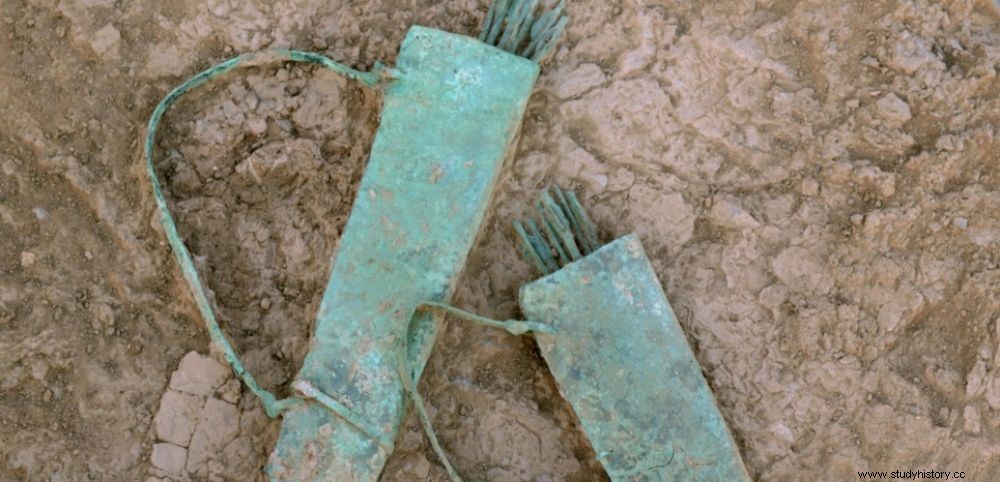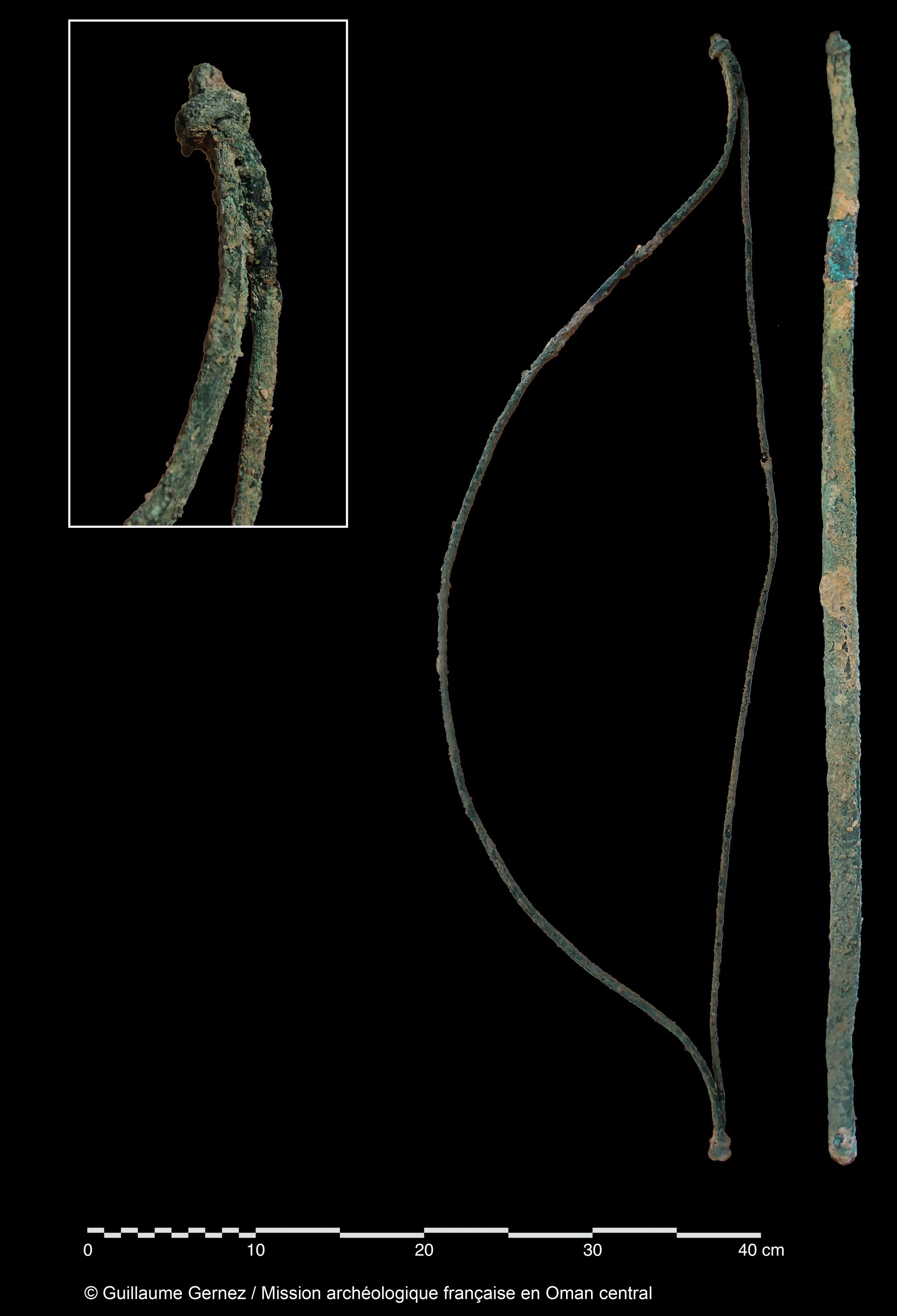 Two copper and bronze quivers dated to the Iron Age (900-600 BC) discovered on the Mudhmar site in the Sultanate of Oman.
Two copper and bronze quivers dated to the Iron Age (900-600 BC) discovered on the Mudhmar site in the Sultanate of Oman. ARABIA. Quivers, arrows, daggers, axes… An exceptional set of bronze weapons dating from 900 to 600 BC (Iron Age II) was discovered for the first time in the Sultanate of Oman, in the south of the Arabian Peninsula. . Extremely rare, these remains were found scattered on the floor of an ancient architectural complex, by researchers from a French archaeological mission led by Guillaume Gernez, from the ArScan laboratory of the CNRS and from the University of Paris Ouest Nanterre, a specialist in weaponry in the Near and Middle East. Located in the Ad-Dakhiliyah region, on the edge of the oases and the Rub' al-Khali desert, the locality of Adam, where these finds were made, has long remained outside the areas explored by scientists.
Yet it is there, at the foot of the Jabal Mudhmar mountain range, that inside a building studied since 2011, the researchers were surprised to discover in a room these bronze quivers, and their arrows… represented in scale models! Their astonishment did not stop there.  In addition to this panoply of armaments, were also unearthed "five battle axes, five crescent-shaped daggers, about fifty arrowheads" , as well as five full arcs. "Such objects are completely new:no metal bow was known in Arabia or the Middle East until now" , explained Guillaume Gernez, in a CNRS document.
In addition to this panoply of armaments, were also unearthed "five battle axes, five crescent-shaped daggers, about fifty arrowheads" , as well as five full arcs. "Such objects are completely new:no metal bow was known in Arabia or the Middle East until now" , explained Guillaume Gernez, in a CNRS document.
Ceremonial bronze arches (70cm) dating from the Iron Age (900-600 BC) unearthed in the Sultanate of Oman © Guillaume Gernez/French Archaeological Mission in Central Oman
What could such a discovery mean?
According to the archaeologists of the mission supported by the French Ministry of Foreign Affairs and the Omani Ministry of Heritage and Culture, "the non-utilitarian nature of most of these weapons could indicate that they were designed to be offered to warrior deities" . What the presence of elements linked to worship practices (fragments of incense burners, small bronze snakes*, etc.) would tend to suggest. But this discovery raises more questions than it answers. Future archaeological excavations are planned to try to better understand the reasons why such metal weapons could have been made.
*In other parts of the Arabian Peninsula, archaeological excavations carried out in comparable periods of the Iron Age have revealed the existence of fortified settlements placed under the protection of a god incarnated in the form of a snake. Animals were particularly present in the pre-Islamic cults of the South Arabian pantheon.
